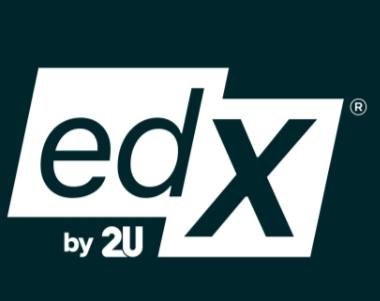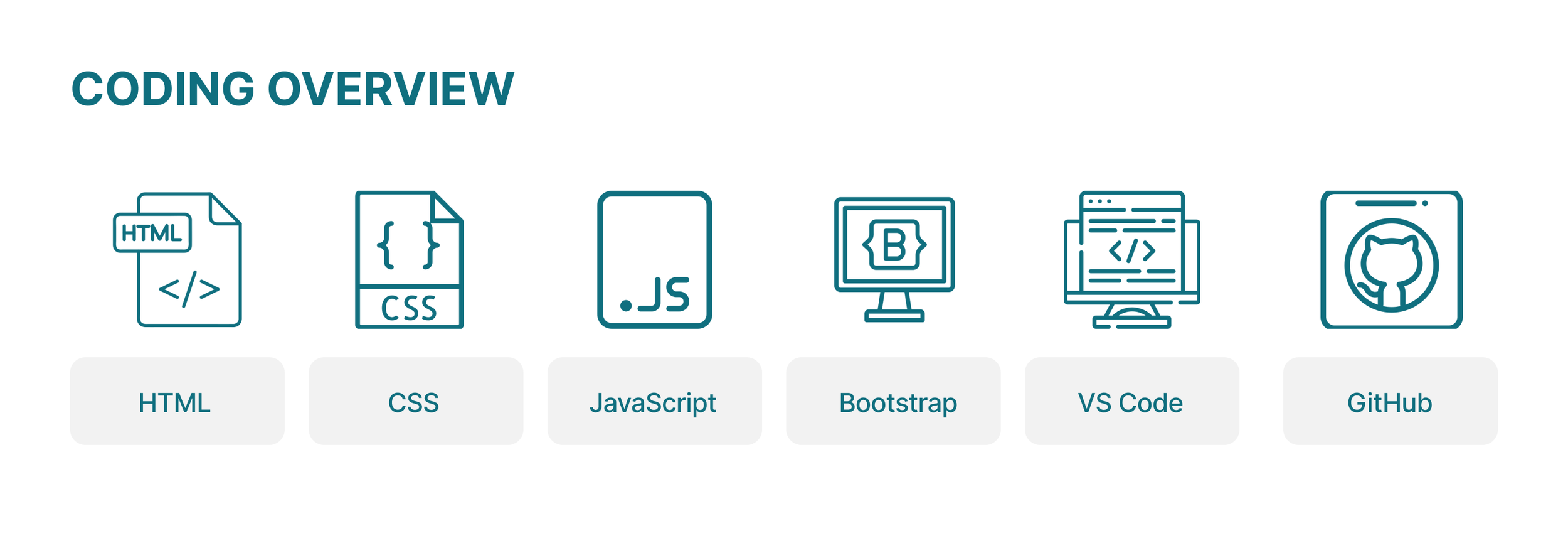My Instructional Journey @edX Boot Camps
Enhancing the end-to-end product design learning experience for e-learners.
EXPERIENCE OVERVIEW
My Role: Instructional Specialist
Date: October 2022 - Present
Location: Remote
Industry: edTech
Tools: Figma, GitHub, VS Code, Zoom, Slack, Google Drive, Learning Management System (Canvas)
INTRO
In September 2022, a recruiter contacted me on LinkedIn regarding a position as an instructional specialist at edX. At that time, I was working as a UX/UI designer and was consistently busy upskilling, learning, and networking within the industry. Although I had never considered a teaching role in edTech, I always found it meaningful and fulfilling. Intrigued by the opportunity, I decided to give it a chance and went through the interview process.
The first step involved an interview with the recruiter, where I was asked questions about UX/UI design. The second step was a technical test that included assessments of design tools and some coding tasks. Finally, the last step required me to role-play as an instructional specialist, demonstrating my skills in teaching, communication, problem-solving, and mentoring design boot camp students. After successfully passing all three steps of the interview process, I accepted the job offer and began working with my first class cohort.
edX is an online education platform owned by 2U since 2021.The platform primarily focuses on offering a variety of educational programs, including boot camps. Founded in May 2012 by the administrations of MIT and Harvard, edX partners with more than 20 universities across the USA, Canada, and the UK.
Who is edX?
The Team
Our instructional team involved an instructor, assistants, a student success manager, a student advisor, an academic manager, and learning experience designers.
Tools Used
Design: Figma (for teaching, creating content, tracking and engaging in activities, leaving comments/feedback)
Coding: GitHub, VS Code (for coding, troubleshooting, and collaboration)
Learning Management Systems: Canvas, Bootcamp Spot (user management, calendar, grading, attendance, class content)
Communication: Slack, Zoom (facilitation of group sessions, workshops and activities), Google Drive (modules and homework submissions)
The Structure of Boot Camp Program
By nature of the program, boot camps are intense and demand the ability to learn quickly or acquire the skills to learn fast within a short timeframe. Each cohort lasts for six months and includes a curriculum covering UX, UI, and coding, which incorporates HTML, CSS, JavaScript, and Bootstrap, along with portfolio creation. Additionally, students are required to complete homework, known as module challenges, and three team projects to finish the course successfully.
The curriculum for the first 3 cohorts in order:
User Experience Design (add images etc.)
User Interface Design
Coding
HTML, CSS, JavaScript, Bootstrap
Portfolio creation
24 modules
3 team projects
My First Cohort - University of California, Irvine
I participated in my first cohort with the University of California, Irvine, where I worked closely with an instructor, two assistants, a student success manager, an advisor and an academic manager. The class had 50+ students, and we, as an instructional team, followed the V1 curriculum, including UX, UI, and coding, which we taught in sequential order. We also prepared class activities outside the curriculum for a more engaged and trendy experience, evaluated module challenges and projects, concluding with portfolio development and reviews.
Next: 1 Year Experience - George Washington University
My next two consecutive cohorts were with George Washington University, where I worked with a smaller class size of 25 students. The team included an instructor, a student advisor, a student success manager, and an academic manager. We followed the same curriculum as my previous program, including the same module challenges, projects, and the capstone project. Although the program structure was consistent, the branding was completely different. My roles—such as co-teaching, facilitating, providing resources, designing and developing learning solutions, troubleshooting, and mentoring students—remained the same. The only difference was that I was the sole facilitator for the class.
In between, I also collaborated with other universities;
As mentioned, 2U has agreements with numerous universities in North America and the UK. The substitute Slack channel allows instructional specialists to take on substitute roles when needed. For example, while I was on a contract with a boot camp program, I also worked as a substitute assistant and instructor at various universities, including Columbia University, the University of Toronto, the University of Oregon, the University of Denver, the University of Central Florida, the University of California, Davis, Berkeley, and the University of Michigan, among others. These substitute roles provided me with the opportunity to work with more students and instructional teams, expand my network, and solve more problems collaboratively within the teams.
The following cohort was a consortium class!
Consortium classes are set up differently than the previous ones I mentioned, meaning the program might offer bigger classes and students enrolled in different universities. Also, students receive the certificate/diploma from the university where they were enrolled while taking the same class with other students.
Consortium classes are set up differently than the previous ones I mentioned, meaning the program might offer bigger classes and students enrolled in different universities. Also, students receive the certificate/diploma from the university where they were enrolled while taking the same class with other students.
This time, the class had about 30 students, an instructor, two assistants, and the same instructional team, including the student advisor, success manager, and academic manager. Most students were enrolled in different universities offering the same curriculum.
Did everything always go smoothly? Of course, no! So, let's mention some instructional struggles so far and how we navigated them.
1- The inevitable overwhelming effect of intense boot camps
By nature, boot camps are intense programs as we teach almost 2 years of material in only 6 months and expect students to graduate with a good level of knowledge and the ability to add immense value to any design project. It's common to see students feeling overwhelmed, tired and stressed a few weeks or months after the program starts because they need to learn fast, submit assignments and projects on time, and prepare their portfolios.
Our solution is to talk to them in groups or privately, understand their challenges, empathize with them, give extra time or help when needed, revise the material, answer their questions, and contact the student success manager for urgent cases.
2- The challenging coding part
Our program includes a coding component, which not all students enjoy. Coding requires a specific skill set and focus. Some students grasp it quickly, while others find it challenging, especially at the beginning. Although we don't delve deeply into coding, we cover essential topics such as HTML, CSS, JavaScript, and Bootstrap, using tools like VS Code and GitHub.
When students feel lost or confused during the coding sessions, we address their concerns by troubleshooting the issues, reviewing the material with them, or recommending that they work with tutors for additional support.
3- Teamwork/collaboration issues
From time to time, some groups got into issues due to different time zones, work schedules or workloads, conflicts, or personal issues. As an instructional team, how we address this always starts with recognizing each team member's skills, strengths, and weaknesses. Based on that, we create or recreate groups to avoid or minimize possible problems. Also, we are always ready to discuss group challenges and help students in breakout rooms without announcing them to the entire class because privacy and credibility come first in remote settings.
CHANGE MANAGEMENT
From V1 Curriculum To V3
Change management in instructional organizations refers to the structured process of implementing, managing, and sustaining change within educational settings. This may include changes to curriculum, instructional practices, policies, technology, organizational culture, or institutional structures. The goal is to facilitate a smooth transition for stakeholders—including administrators, teachers, students, and parents—while ensuring that the intended outcomes of the change are achieved effectively.
Before my consortium class cohort began, there was a structural change in the curriculum. We were informed about this update digitally and participated in an informative meeting to discuss the changes and improvements made by the instructional designers, which restructured our teaching order.
The need for this update arose for a couple of reasons:
Our instructional team noticed some slides were being repeated, leading to confusion and including outdated content.
By keeping the coding section until the end of the cohort, students were feeling fatigued.
The new V3 curriculum offers a more balanced coding experience spread throughout the course, making it more manageable and less overwhelming for students.
Measuring e-Learning Success
It is essential not only to teach but also to measure the effectiveness of the program. We assess success through data collected from weekly or biweekly reports on the Learning Management System (LMS), as well as feedback and comments from students. Students evaluate various aspects, including the learning environment, the course material, their comprehension of the content, the delivery style, the pacing of instruction, and the support provided by assistants, among other factors related to the instructional team.
As an instructional team, we aim to hit the highest range of numbers on the report, consider positive and negative feedback, and work on the necessary changes or improvements. Even though some students dropped out of the program due to personal issues or the intensity of the program, most completed the courses and graduated successfully.
Some skills that I gained and advanced in my instructional roles
Empathy
Excellent communication
Teamwork and collaboration
Problem-solving and troubleshooting
Creativity & adaptability
Change management
Advanced tech skills: Figma, LMS, Facilitation on Zoom
Coding skills
Content design
Instructional Design With Articulate 360
By using ADDIE model and adult learning theories















